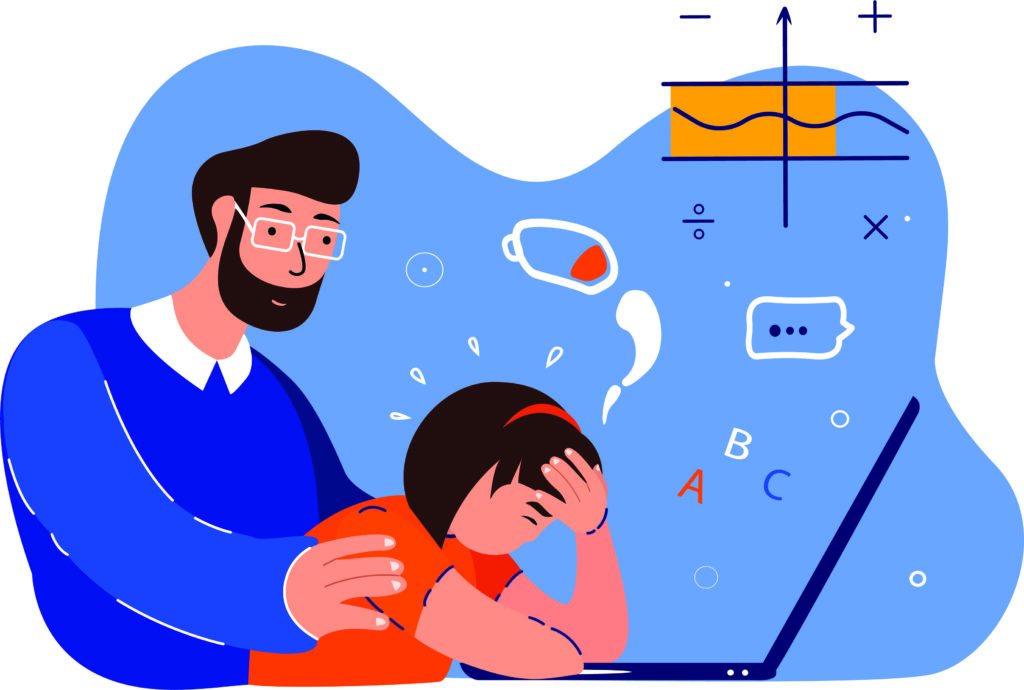How to cope when cooped up with loved ones
We love our families, but if there’s one thing this challenging year has taught us, it’s that there is such a thing as too much togetherness. Disruptions in work and personal routines began in March and, for some people, have continued unabated since. This is leading to a phenomenon known as family burnout.
Family Burnout Affects Kids, Too
There is plenty to be anxious about these days. Many of us have been thrust into unfamiliar roles: we are remote employees, cooks, and full-time babysitters. The novelty of spending time with our spouses and kids 24/7 has long since worn off, replaced by worries over staying healthy and keeping our jobs. Even having a ready supply of toilet paper is no longer a given in these strange times, but it’s important to remember that we aren’t the only ones affected by the pandemic. Kids are experiencing stress, too. Familiar everyday routines like going to school and playing with friends have been upended, and many children lack the emotional maturity to understand why. Masks used to be reserved for Halloween, but suddenly they’re as normal a part of our daily dress as shoes and socks.
Recognizing the signs of burnout can be tricky since they’re mostly invisible. Symptoms include physical and emotional exhaustion, loss of motivation, negativity and depression. Lack of energy can make even the most basic tasks feel overwhelming; dirty dishes pile up in the sink, laundry goes unwashed, and dinner consists of PB&J sandwiches again. Many people withdraw emotionally from their spouse and children. Anger, frustration, and depression are common. Children experience the same feelings but display them differently. Adults are better at verbalizing their needs while kids are more likely to keep their emotions to themselves, which can lead to irritability and lashing out.
Strategies for Dealing with Burnout
Watching for the signs of burnout is key in getting a handle on it. Understand that the things frustrating us are different than those bothering our kids. Parents might be burned out on work while children are upset over virtual schooling or missing playtime with friends. Despite these differences in triggers, the end result is the same.
Look for signs of depression, mood swings, changes in sleep patterns, and increased conflict with other family members. One of the best things you can do is maintain an open line of communication with your child. Check in on them frequently and ask how they are doing. Try to do this in a neutral setting where they are more likely to open up; in the car while driving to the grocery store is a great, low-key place to initiate a conversation. Choose your words carefully and frame the discussion in a positive light. For instance, you might say, “You seem unhappy these days, and I don’t blame you. Spending so much time at home is difficult! Is there anything I can do to help you out?” This approach is perfect because it shows your child that “we’re all in this together” and instead of berating them, you are displaying sympathy and a willingness to help. Kids respond positively to this type of conversation.
Another crucial step involves promoting the habit of self-care. Quiet time is at a premium when everybody is under one roof at the same time, but it’s essential in reducing stress and anxiety. Establish soothing rituals such as reading, listening to music, going for a walk, or taking a bath. Don’t just say you’re going to do these things—schedule them on a calendar to keep yourself accountable. Setting an alarm on your smartphone or Alexa will help with consistency. Make this quiet time a priority—for both you and your kids—and you’re likely to see a positive change in behavior.
Healthy Body, Healthy Mind
A healthy body helps maintain a healthy mind. Many of us have slipped into bad habits while being stuck at home; try limiting your use of alcohol and tobacco, stock up on nutritious snacks instead of junk food, and be sure to get at least a little bit of exercise, both physical and mental, every day. Practice mindfulness as a family by choosing a fun activity such as creating a story: set a timer for five minutes, have everybody sit in a circle, and take turns reciting one sentence at a time, making up a story as you go along. Mindfulness exercises such as this are perfect ways to de-stress and bond.
Keep in mind that this too shall pass. Being cognizant of each other and understanding that we are all dealing with stress and frustration while trying our best to navigate through this uncertain period will help ensure a positive outcome in the long run.
WORDS: MARK PETRUSKA

